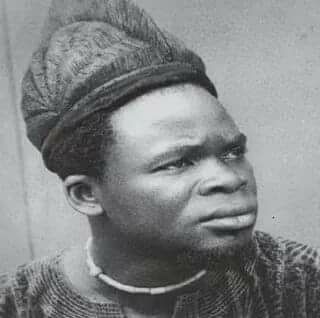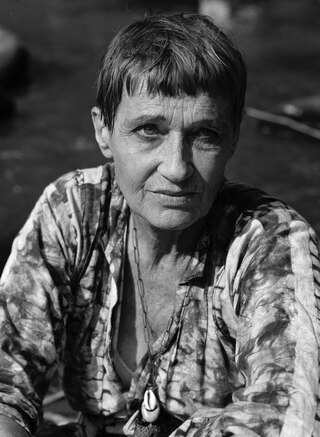Related Research Articles

Oshun is the Yoruba orisha associated with love, sexuality, fertility, femininity, water, destiny, divination, purity, and beauty, and the Osun River, and of wealth and prosperity in Voodoo. She is considered the most popular and venerated of the 401 orishas.

Osogbo is a city in Nigeria. It became the capital city of Osun State in 1991. Osogbo city seats the Headquarters of both Osogbo Local Government Area and Olorunda Local Government Area. It is some 88 kilometers by road northeast of Ibadan. It is also 108 kilometres (67 mi) by road south of Ilorin and 108 kilometres (67 mi) northwest of Akure. Osogbo shares boundaries with Ikirun, Ilesa, Ede, Egbedore, Ogbomosho and Iragbiji and it is easily accessible from any part of the state because of its central nature. It is about 48 km from Ife, 32 km from Ilesa, 46 km from Iwo, 48 km from Ikire and 46 km from Ila-Orangun; the city had a population of about 200,000 people and an approximate land area of 126 km. The postal code of the area is 230.

Osun State, occasionally known as the State of Osun by the state government, is a state in southwestern Nigeria; bounded to the east by Ekiti and Ondo states for 84 km and for 78 km respectively, to the north by Kwara State for 73 km, to the south by Ogun State for 84 km and to the west by Oyo State, mostly across the River Osun. Named for the River Osun—a vital river which flows through the state—the state was formed from the southeast of Oyo State on 27 August 1991 and has its capital as the city of Osogbo.

Osun-Osogbo is a sacred grove along the banks of the Osun river just outside the city of Osogbo, Osun State of Nigeria.

The Oṣun River, Yoruba: Odò Ọ̀ṣun, is a river of Yorubaland that rises in Ekiti State and flows westwards into Osun State before turning southwestwards at its confluence with the Erinle River near the town of Ede and then heading south at the Asejire reservoir flowing though the rest of the state and Ogun State in Southwestern Nigeria before eventually discharging into the Lekki Lagoon and the Atlantic at the Gulf of Guinea.

Durodola Durosomo Duroorike Timothy Adisa Ladipo, more commonly known as Duro Ladipo, was one of the best known and critically acclaimed Yoruba dramatists who emerged from postcolonial Africa. Writing solely in the Yoruba language, he captivated the symbolic spirit of Yoruba mythologies in his plays, which were later adapted to other media such as photography, television and cinema. His most famous play, Ọba kò so, a dramatization of the traditional Yoruba story of how Ṣango became the Orisha of Thunder, received international acclaim at the first Commonwealth Arts Festival in 1965 and on a Europe an tour, where a Berlin critic, Ulli Beier, compared Ladipọ to Karajan. Ladipo usually acted in his own plays.

Chief Nike Davies-Okundaye, also known as Nike Okundaye, Nike Twins Seven Seven and Nike Olaniyi, is a Nigerian Yoruba and adire textile designer. She is best known as an artist for her cloth work and embroidery pieces.
Chief Horst Ulrich Beier, commonly known as Ulli Beier, was a German editor, writer and scholar who had a pioneering role in developing literature, drama and poetry in Nigeria, as well as literature, drama and poetry in Papua New Guinea.

Twins Seven Seven, born Omoba Taiwo Olaniyi Oyewale-Toyeje Oyelale Osuntoki was a Nigerian painter, sculptor and musician. He was an itinerant singer and dancer before he began his career as an artist, first attending in 1964 an Mbari Mbayo workshop conducted by Ulli Beier and Georgina Beier in Osogbo. Twins Seven Seven went on to become one of the best known artists of the Osogbo School.
Akin Fakeye, is a Nigerian artist who works in the medium of wood carving.
Ulli Beier Museum is an art gallery and art school in Osogbo, Nigeria. It was established by the artists Ulli Beier and Susanne Wenger. Today it is a contemporary African art gallery, hosting the work of talented and aspiring artists from the Osogbo area and across Nigeria.
Bakare Gbadamosi is a Yoruba poet, anthropologist and short story writer from Nigeria.

Susanne Wenger MFR, also known as Adunni Olorisha, was an Austrian-Nigerian artist and Yoruba priestess who expatriated to Nigeria. Her main focus was the Yoruba culture and she was successful in building an artist cooperative in Osogbo. She partnered with local artists in Osogbo to redevelop and redecorate the Osun Osogbo Sacred Grove with sculptures and carvings depicting the various activities of the Orishas.
Lanre Buraimoh is a Nigerian-born artist who is based in Texas, US. His "bead paintings" are exhibited internationally.
The Mbari Club was a centre for cultural activity by African writers, artists and musicians that was founded in Ibadan, Nigeria, in 1961 by Ulli Beier, with the involvement of a group of young writers including Wole Soyinka and Chinua Achebe. Mbari, an Igbo concept related to "creation", was suggested as the name by Achebe. Among other Mbari members were Christopher Okigbo, J. P. Clark and South African writer Ezekiel Mphahlele, Frances Ademola, Demas Nwoko, Mabel Segun, Uche Okeke, Arthur Nortje and Bruce Onobrakpeya.
Buraimoh is a Nigerian male given name and surname predominantly used among Muslims, particularly within the Yoruba community. Derived from Arabic, "Ibrahim", the name which signifies 'father of many' or 'father of a multitude', symbolizing abundance, strength, and lineage. Which the Yoruba dialectal variation is Buraimoh or Buremo. It is the Arabic form of Abraham used in various languages.
Ifáyẹmi Ọ̀ṣúndàgbonù Elebuibon is a Yoruba and Nigerian writer, poet, author, linguist, and a world-famous Ifa priest. His plays and films have received worldwide acclamation for his pursuit of the preservation of Yoruba culture and heritage. He also serves as a traveling lecturer in several institutions including at the department of African language and literature at the Obafemi Awolowo University and Black Studies at the San Francisco State University and at the Wajumbe Cultural Institution in California.
Asiru Olatunde (1918–1993) was a Nigerian artist, blacksmith, and painter, often regarded as one of the prominent painters from Osogbo. He was one of a small group of artists who were part of a creative community known as the Oshogbo School of art. His illustrations were centered around Yoruba mythology as well as Biblical stories, combined with local folklore
Chief Muraina Oyelami is a Nigerian painter and drummer of Yoruba descent. He was among the first generation of artists to come out of the Osogbo School of Art in the 1960s. He was a drummer and actor with the theatre company of Duro Ladipo. He taught traditional music and dance at Obafemi Awolowo University from 1976 to 1987. As a musician, he trained in the dùndún and the Batá drum. He was the chief of his hometown Iragbiji.
Jimoh Bola Akolo was a Nigerian artist known for his contributions to modern Nigerian art, particularly as a member of the Zaria Art Society. His work often explored indigenous cultural traditions and contemporary social issues.
References
- ↑ "Chief Jimoh Buraimoh Organization". Archived from the original on 2014-09-12. Retrieved 2014-07-29.
- ↑ Enyinnia, Chigozirim (2024-11-06). "U.S. honours three Nigerian artists on 50th anniversary of art partnership". Nairametrics. Retrieved 2024-11-06.